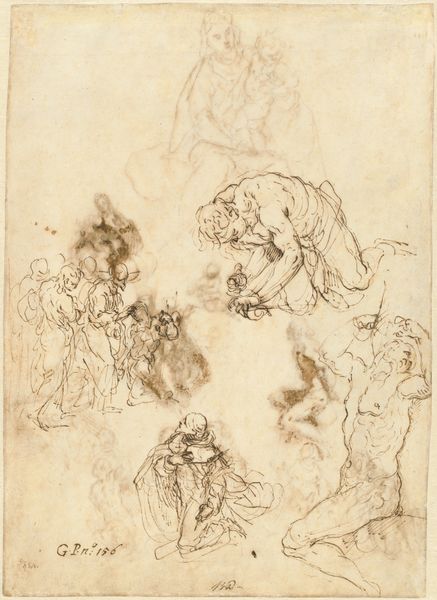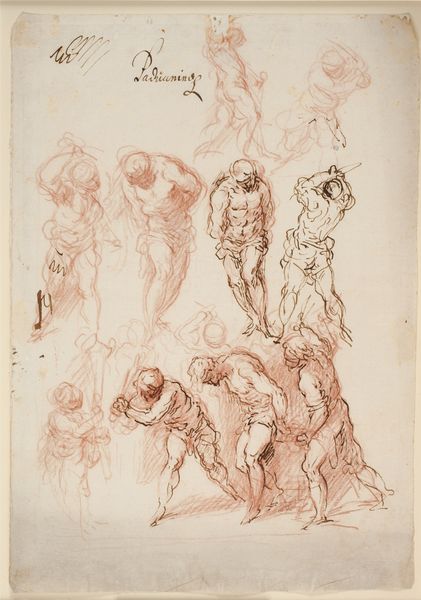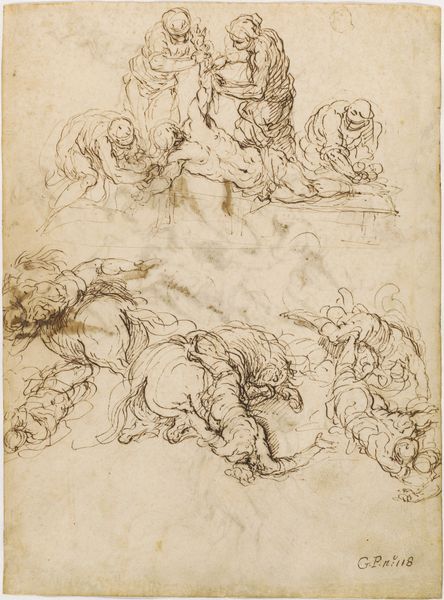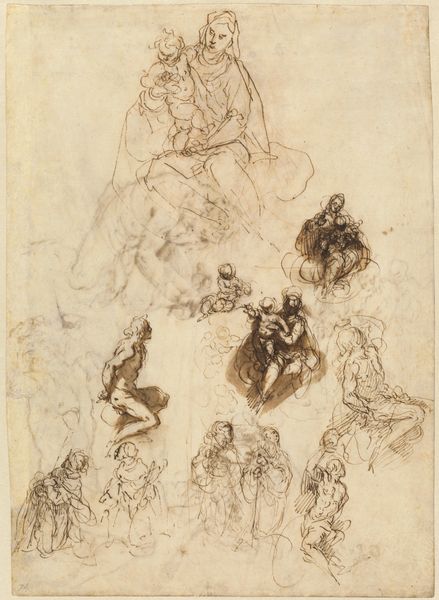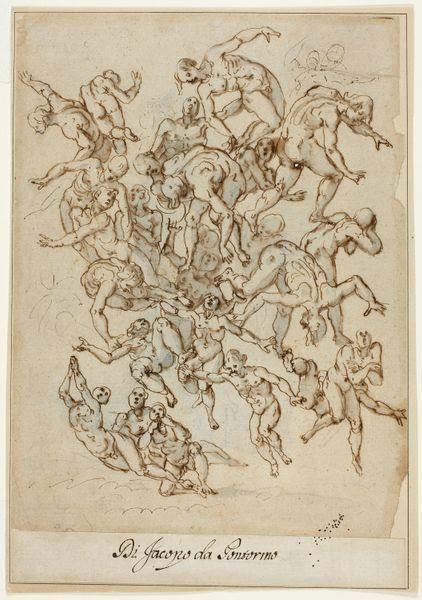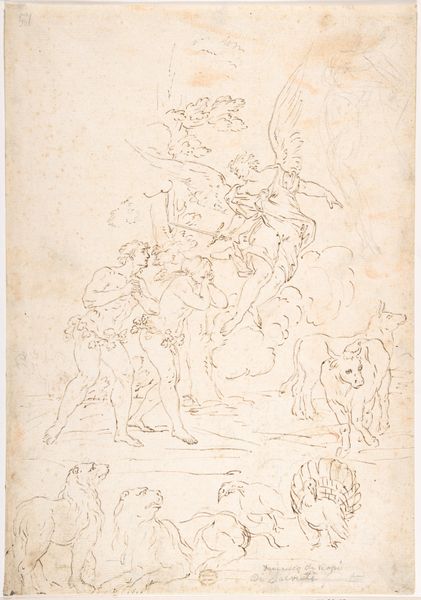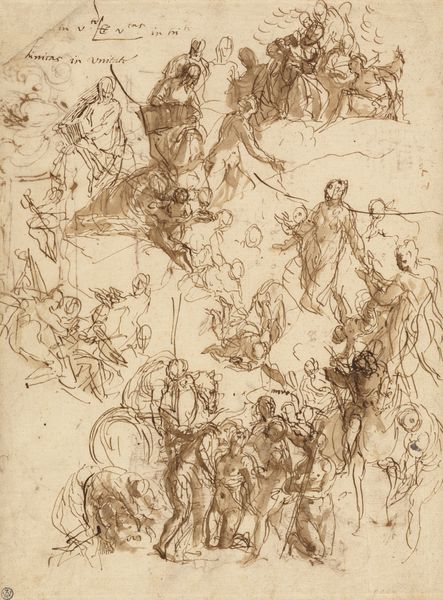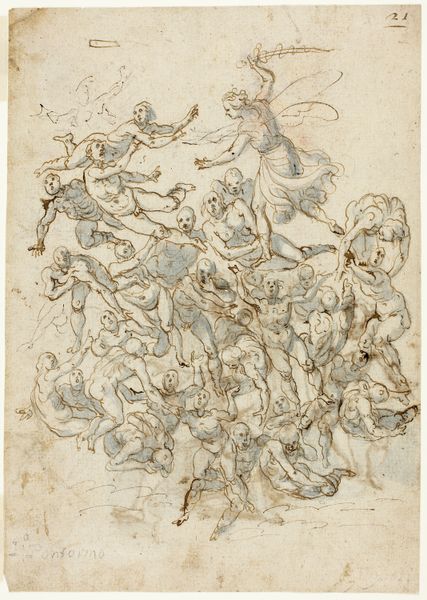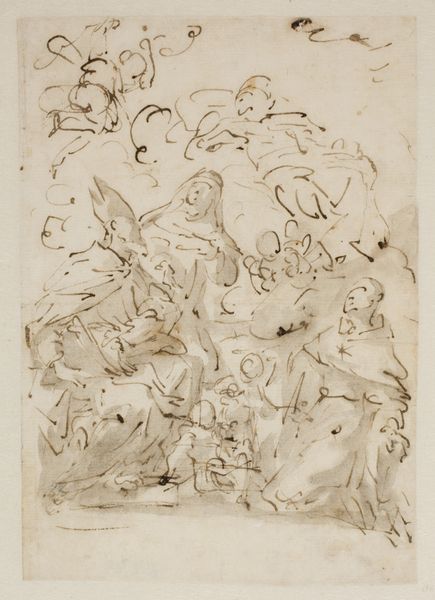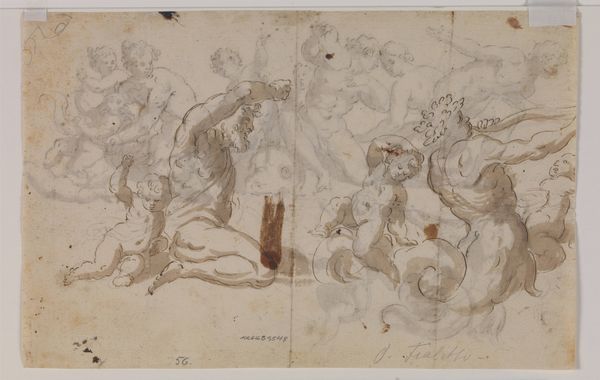
Figure Studies: Seated Female Holding a Book, Two Heads of Bearded Men, Seated Male Nude, and Four Sketches for Christ Judging (recto); Studies for Cain Slaying Abel (verso) 1548 - 1628
0:00
0:00
drawing, print, ink
#
drawing
#
ink painting
# print
#
pencil sketch
#
figuration
#
11_renaissance
#
ink
#
men
#
history-painting
#
male-nude
#
christ
Dimensions: 10 3/8 x 7 3/8in. (26.3 x 18.8cm)
Copyright: Public Domain
Editor: Here we have a drawing by Jacopo Palma the Younger, dating sometime between 1548 and 1628. It's called “Figure Studies” and it seems to be made of ink on paper. It feels like looking into someone's mind at work, like visual notes before a larger painting. What do you see in this piece? Curator: It's a fascinating glimpse into Palma’s creative process, certainly. I see a potent visualization of power and narrative, especially when considering the socio-political context of 16th and 17th century Venice. Note how the studies for “Christ Judging” are juxtaposed with the "Cain Slaying Abel." Aren’t we immediately thrust into thinking about justice, transgression, and the foundations of Western morality? Editor: That’s interesting. So, you see the contrast as key to understanding the work? I hadn’t thought about the implications of their placement together. Curator: Absolutely! Consider this: Venice, at that time, was navigating complex power dynamics, internally and externally. The Republic prided itself on its just rule, but, like any society, it wrestled with its own contradictions. Are these figures – Christ, Cain, Abel – archetypes through which Palma, perhaps unconsciously, explores the fractures and anxieties within that social framework? Does this placement also comment on the failures of patriarchal structures? Editor: So, it's not just a religious study but a commentary on Venetian society? I wonder how much the social context informed his artistic choices versus just religious conviction. Curator: It’s likely both, influencing one another. The artist’s subjectivity is always interwoven with the societal fabric. What can close looking tell us about contemporary power struggles related to gender and class? Editor: This makes me look at the sketch in a different way. It becomes more about exploring the tensions within societal order. Curator: Exactly. And recognizing those tensions, past and present, allows art to spark dialogue and maybe, hopefully, action. Editor: This conversation definitely added a whole new layer to how I see artistic intention and the weight of historical context. Thank you!
Comments
No comments
Be the first to comment and join the conversation on the ultimate creative platform.
